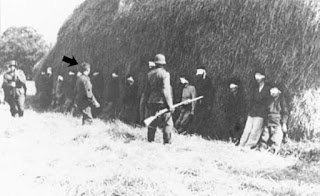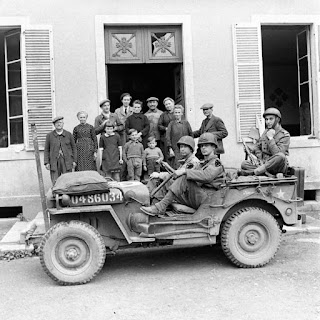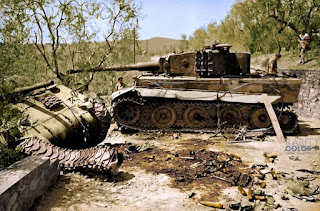On the evening of 23 October, the British Eighth Army under the command of General Bernard Montgomery launched its long
On the evening of 23 October, the British Eighth Army under the command of General Bernard Montgomery launched its long-anticipated offensive to break the strongly-held El Alamein line and drive the Axis out of Egypt.
The fighting continued over the next week as Montgomery conducted “crumbling” operations to systematically reduce and wear down the Axis formations. During this time, the British launched a series of local attacks along differing lines of advance that compelled the Axis to respond in kind.
In doing so, the British forced Rommel to consume large amounts of precious fuel and other resources as he shifted his forces to meet the various British thrusts. Worse yet from his perspective, Axis counterattacks repeatedly failed to stem the British tide, and his forces suffered heavy losses from the continuous fighting. Particularly hard hit was his tank strength, which declined precipitously.
Making Rommel’s situation worse, throughout this period, British and American aircraft sank several Africa-bound merchant ships thus starving the German/Italian Panzerarmee of much needed logistical support.
On the night of 1-2 November, Eighth Army launched Operation Supercharge, its follow-up attempt to breach the Axis line.
Under the cover of a tremendous artillery bombardment, a reinforced 2nd New Zealand Division opened a new corridor through the minefields thus allowing the 9th Armoured Brigade to pass through and establish a bridgehead deep within the Axis defences. The next day the British expanded their salient and successfully defeated several desperate Axis counterattacks that cost the latter 70 German and nearly 50 Italian tanks.
On 3 November Rommel realized that the situation was beyond salvation and began disengaging portions of his army. The next day the British broke through the final remnants of the Axis line and advanced through open desert in pursuit of the fleeing panzerarmee.
On this day and over the next week the British fought a number of engagements resulting in the destruction or seizure of large quantities of equipment and the collection of many thousands of prisoners. Thousands more simply gave themselves up as they were left behind without hope of escape or support.
By the 11th the aggregate of prisoners taken since the beginning of the British offensive numbered 7,802 Germans and 22,071 Italians. Other Axis casualties were more difficult to determine, but estimates ranged from 2,120 dead and 4,819 wounded to 10,000 dead and 15,000 wounded. Axis equipment losses included some 450 tanks, over 1,000 guns and 84 aircraft.
In terms of units, the Italian Trento, Trieste and Littorio Divisions were all but destroyed while several other Axis divisions were severely mauled. British casualties for the battle amounted to 2,350 dead, 8,950 wounded and 2,260 missing (a total of 13,560) along with some 500 tanks disabled (most of which were repairable), 111 guns and 97 aircraft (including 20 that were American).
In the two previous years, the British had won similar victories in North Africa, and their fortunes had been on the ascendency. In both cases, these gains were short lived.
Now in the opening days of November 1942, the British enjoyed victory once again, and Churchill ordered the church bells in Britain to be rung in celebration of this fact. Egypt had been saved, and with it, control over the Suez Canal and the vital Persian Gulf oil region had been assured. Still, the question remained if this victory represented a true turning point or just another temporary phase in an ongoing conflict that had already seen numerous changes of fortune.
While history would serve as the ultimate arbiter on this matter, there were a number of immediate factors that seemed to indicate that the tide had in fact turned in Britain’s favour and that the pendulum that had swung back and forth during the previous two and a half years was now irrevocably locked on a path favouring the British.
Pictured here (top) are Sherman tanks of the 9th Queen’s Royal Lancers advancing after El Alamein on 5 November 1942. No 1 Army Film & Photographic Unit, Chetwyn Len (Sgt), Public Domain. Also pictured (bottom) is a collection of captured German equipment including Panzer Mk III tanks and Sd Kfz 135/1 self-propelled 150mm howitzers that were seized during the battle or its immediate aftermath. Terry Ashwood, No 1 Army Film & Photographic Unit, Public Domain. For more information on this and other related topics, see Blue Water War, the Maritime Struggle in the Mediterranean and Middle East, 1940-1945.












Comments
Post a Comment